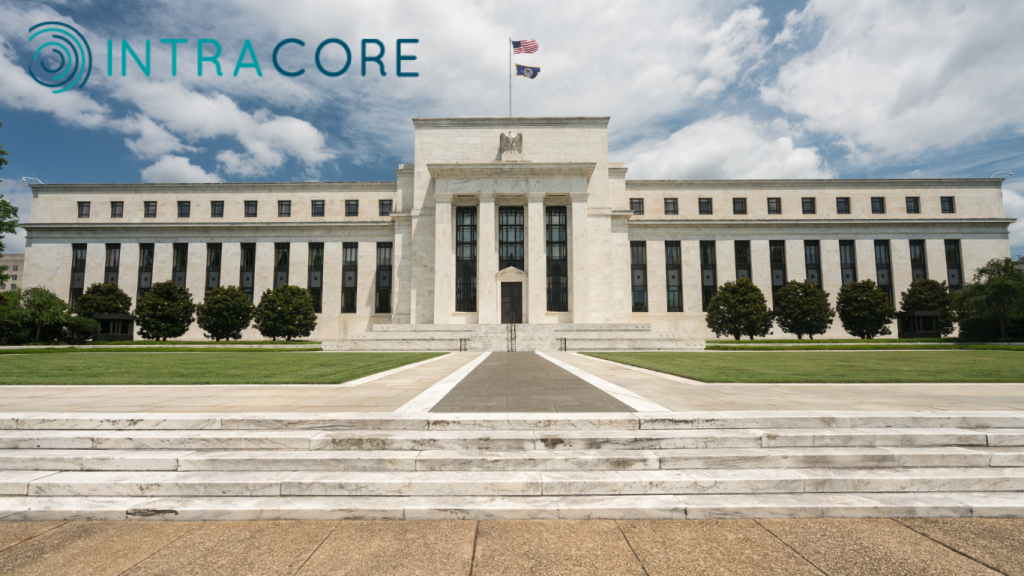
According to the article, the Fed may raise interest rates next week to curb inflation, but may also cut rates at the end of the year in response to the economic slowdown. This means that the dollar could strengthen in the short term, but weaken in the long term. Therefore, traders may consider the following suggestions:
- Before the Fed raises rates, buy the dollar against other currencies, such as EUR/USD or sell USD/JPY.
- After the Fed raises rates, sell the U.S. dollar against other currencies to take profits.
- Before the Fed cuts interest rates, buy assets that are correlated with economic growth, such as stocks or commodities.
- Sell growth-related assets to avoid losses after a Fed rate cut.
The original article is as follows:
Caixin, April 28 (Editor Bian Chun) – Emergency loans from the Federal Reserve to banks increased for the second consecutive week, underscoring the continued pressure on the financial system following the successive failures of several U.S. banks last month.
According to data released Thursday, in the week ended April 26, the Fed provided loans to financial institutions through two support loan arrangements with a balance of $155.2 billion, compared with $143.9 billion in the previous week.
The weekly balance sheet data released by the Fed showed that banks borrowed a balance of $73.9 billion from the Fed’s traditional support loan program (i.e., the discount window), compared with $69.9 billion the previous week, after having reached a record $152.9 billion last month.
The discount window is the most traditional liquidity support provided by the Federal Reserve for banks.
The outstanding balance of another borrowing arrangement, the Bank Term Funding Program (BTFP), also climbed to $81.3 billion, compared with $74 billion the previous week. The Fed announced the launch of the financing program after the collapse of Silicon Valley Bank and Signature Bank, and the BTFP was officially opened to banks on March 12.
Bank stocks under pressure again
Bank stocks came under renewed pressure this week after First Republic Bank’s share price fell to a record low due to the outflow of deposits from the bank.
First Republic’s future remains uncertain as the U.S. government and First Republic’s biggest rivals are at loggerheads over how to rescue the bank.
The fate of First Republic Bank has become a “game of chicken” (game of chicken) between the U.S. government and banking giants, both sides want to avoid huge losses, but also want each other to rescue the troubled bank, now it depends on who is bold enough, who can hold back until the end, who is the winner. The winner will be the one who can hold back.
Complicating the Fed’s monetary policy resolution
An increase in emergency loans reflects a resurgence of banking volatility that could complicate a monetary policy resolution by Federal Reserve officials next week. Policymakers are likely to assess how the credit crunch will affect economic growth.
It is widely expected that the Fed will raise its benchmark interest rate by 25 basis points next week, taking it above 5%, to keep downward pressure on inflation. For now, U.S. inflation remains well above the Fed’s target.
“They (Fed officials) will test the economy’s resilience, especially as credit conditions tighten.” Priya Misra, head of global interest rate strategy at TD Securities, said, “If some officials are nervous about the recovery, we may get some insight into that in the minutes.”
Fed officials have been working to address financial stress through emergency lending programs and other measures separate from inflation-targeting monetary policy decisions.
But Misra said that could change if banking stress starts to drag down economic growth. He expects the Fed to make two more rate hikes of 25 basis points and then start cutting rates in December as the economy begins to slow.
Disclaimers:
Any opinions and information provided by us are for informational purposes only and do not constitute any investment advice or recommendation. Any consequences of anyone making an investment decision based on the information or advice we provide are the sole responsibility of the investor and not ours.
We are not responsible for any direct or indirect losses arising from the use of or reliance on the information or advice provided by us. Investors should conduct their own research and evaluation of markets, securities and other investment instruments, and make investment decisions within their own risk tolerance.
Please note that investing involves risk and is not suitable for everyone. Investors should carefully consider their investment objectives, risk tolerance and financial situation before making any investment decisions.




